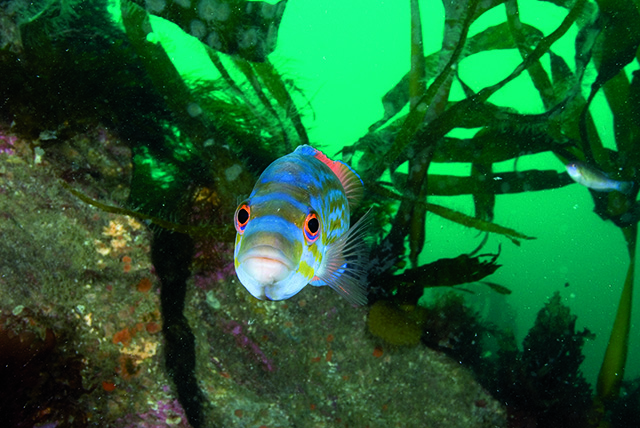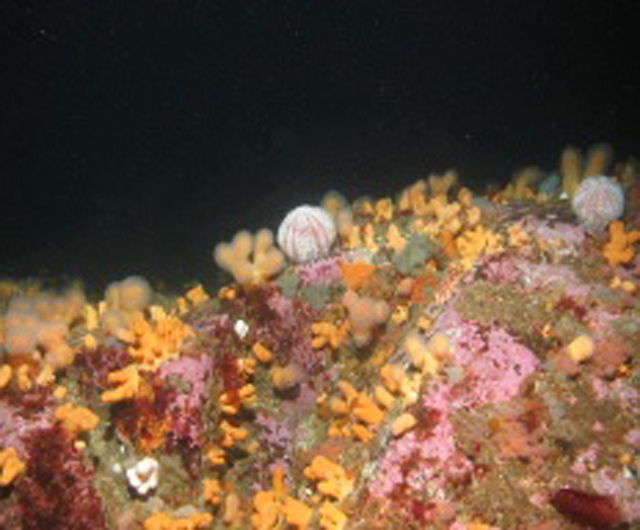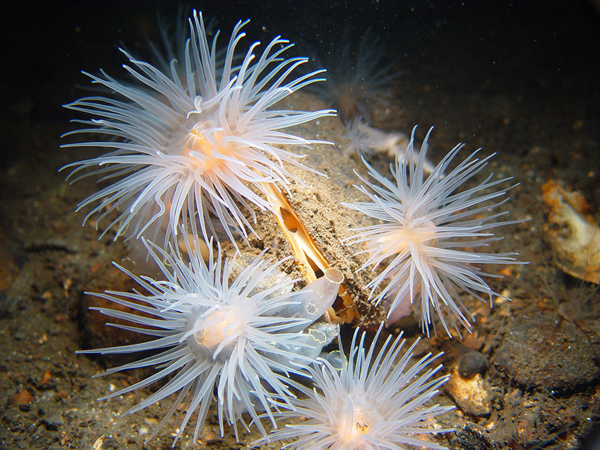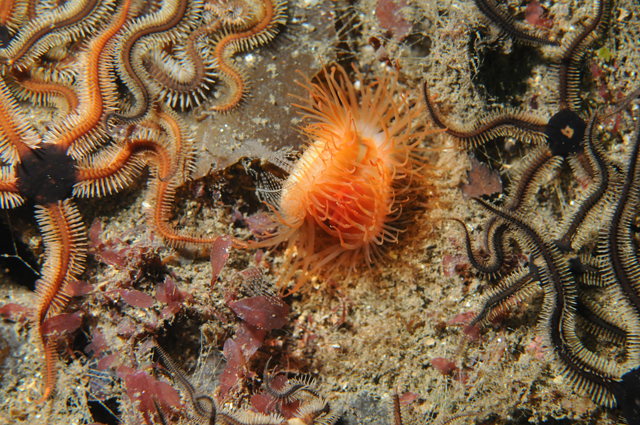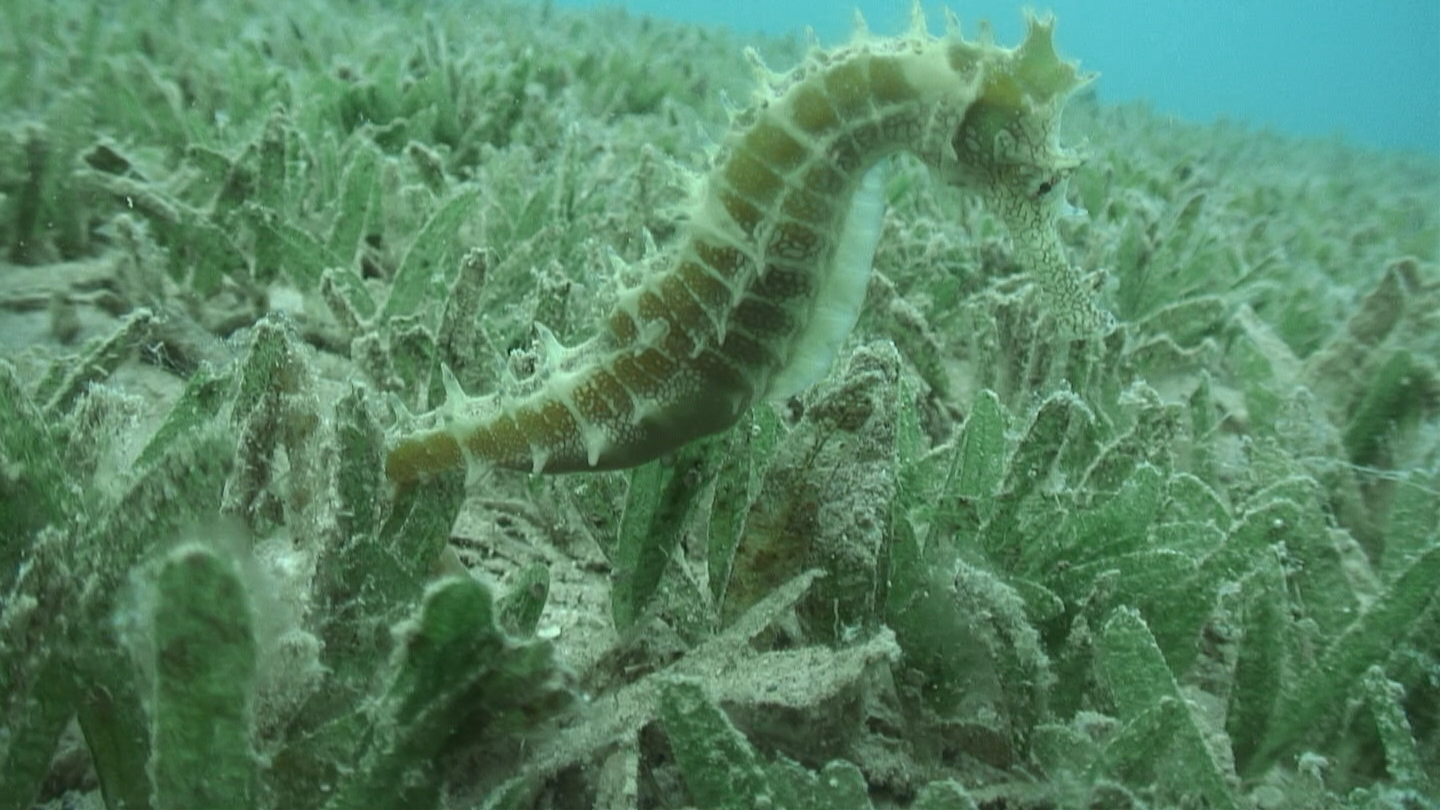Government’s scientists’ proposals for the final set of MCZs to help restore England’s seas are welcomed by leading conservation charities
The Government’s scientific advisors have provided proposals on where a final set of Marine Conservation Zones are needed around England.
Leading marine conservation charities, the Marine Conservation Society (MCS) and The Wildlife Trusts have welcomed the plans, saying they are a positive step forward towards restoring our seas.
The sites are being proposed for protection by the Joint Nature Conservation Committee and Natural England. They would form the third and final round of Marine Conservation Zone designations around England.
The MCS says in the previous two tranches, only 50 protected sites have been created in English waters, falling far short of the amount of protection scientists say is needed to safeguard our seas. These new plans with approximately 50 further sites could help turn that around.
The new places being recommended for a public consultation to be run by the Government next year include South of the Isles of Scilly, which supports commercially important Monkfish; Norris to Ryde, which is rich in seagrass meadows; Mud Hole off the north-west coast – 35 metres deep and home to rare sea pens – and Compass Rose off the Yorkshire coast, which is an important spawning and nursery ground for herring and lemon sole.
MCS spokesperson Melissa Moore said: ‘The 50 Marine Conservation Zones being recommended by the government’s scientific advisors are essential to ensure we are protecting examples of all habitats. They will allow a proportion of our seas to begin to recover from over a century of damage and contribute to the restoration of biodiversity in our seas. We call on Government to include all these sites in their third tranche consultation next summer.’
The Wildlife Trusts spokesperson Joan Edwards said: ‘UK seas are home to a stunning array of wildlife, as well as playing a vital role in the planet’s life-support system. If designated as Marine Conservation Zones, these 50 new sites will help to establish a proper network of protected areas in our seas. This is a huge step towards ensuring that future generations will be able to rely on healthy and productive seas, rich in wildlife.’

Cuttlefish. Credit Paul Naylor
CASE STUDY – Norris to Ryde proposed MCZ
This proposed site lies along the coast of the Isle of Wight. Under the surface is one of the largest seagrass meadows in the south-east region; totalling around 500 acres, or 200 football pitches! These marine plants are really important. Their long roots help to stabilise the sea bottom and prevent erosion. The meadows also provide hiding places for fish and other creatures to live and have young. It’s essential that this area receives protection to safeguard the fantastic wildlife found here.
CASE STUDY – Mud Hole proposed MCZ
Mud Hole is a deep site 21km off the coast off Cumbria which could become a protected area following consultation next year. This muddy site is perfect habitat for the burrowing creatures such as Dublin Bay prawns, angular crabs and shrimps which live here. Also found within this area are beautiful sea-pens, which look like feathers coming out of the sea floor. If designated this site could allow for recovery of this highly sensitive area.

Common Starfish. Credit Kat Saunders
Tranche 3 MCZ designations
Defra asked JNCC and Natural England to provide scientific advice on a suite of site options from which they could select potential Marine Conservation Zones (MCZs) that could form a third tranche of MCZ designations.
Further information about this process can be found here: http://jncc.defra.gov.uk/page-7119. It was requested that the site options were discussed with stakeholders before the scientific advice is submitted.
A stakeholder workshop was held as part of the advice process on 14-15 November 2016. Both the Marine Conservation Society and The Wildlife Trusts took part in this meeting. Further details of the workshop are available at: http://jncc.defra.gov.uk/page-7325.
The sites being recommended for designation are:
- Alde Ore Estuary
- Axe Estuary
- Dart Estuary
- East Meridian (Eastern section)
- Erme Estuary
- Hythe Bay
- Otter Estuary
- Ribble
- Taw Torridge Estuary
- Thames Estuary
- Beachy Head East (Royal Sovereign Shoals)
- Bembridge
- Camel Estuary
- Cape Bank
- Compass Rose
- Devon Avon Estuary
- Goodwin Sands
- Holderness Offshore
- Inner Bank
- Kentish Knock East
- Markham’s Triangle
- Morte Platform
- Mud Hole
- Norris to Ryde
- North-East of Haig Fras
- Offshore Foreland
- Orford Inshore
- Selsey Bill and the Hounds
- Silver Pit
- Slieve Na Griddle
- Solway Firth
- South-West Deeps (East)
- South of Celtic Deep
- South of Portland
- South of the Isles of Scilly
- South Rigg
- Studland Bay
- Wyre-Lune
- Yarmouth to Cowes
- Queenie Corner
- East of Start Point MCZ Area of Search
- South of Chesil Beach MCZ Area of Search
- West of Copeland MCZ Area of Search
- West of Lundy Area of Search
- + 3 inshore MCZ Areas of Search
- + over 10 mobile species proposed MCZs by 3rd parties
120 MPs unite in call for full network of Marine Protected Areas
Discussions surrounding a full network of Marine Protected Areas were held on the five year anniversary of the Marine &…
Report calls for 48 new Marine Conservation Zones
The 48 areas proposed by The Wildlife Trusts are said to be the final gap-fillers in the ‘blue belt’ of…
Scottish marine protected areas have RYA Scotland backing
The 30 MPAs are not anticipated to cause any problems for recreational boaters
RYA blasts report that ‘fails to recognise importance of robust evidence in MCZ process’
Environmental Audit Committee's report's recommendations could impact recreational boaters, says RYA
First MCZs in England to be designated this Autumn
The RYA is objecting to just one of the 31 sites proposed for designation in 2013
Decision to withdraw plans for 10 MCZs in Wales
The RYA says it's good news for boating
New Marine Conservation Zones announced
Europe’s longest chalk reef – the Cromer Shoals in Norfolk – is among the 23 latest areas to gain protected
Marine Protected Areas doubled to tackle Scotland’s sealife declines
The new nature conservation MPA designation orders come into force on 7 August
Dredging banned in Wester Ross waters
TheScottish Government has put in place an urgent Marine Conservation Order to safeguard seabed habitats off Wester Ross in northwest…
Second tranche of Marine Conservation Zones announced
Defra announces the 37 English sites under consideration for inclusion in consultation
New twist in Studland eelgrass debate
The Boat Owners Response Group (BORG) say part of the Studland eelgrass report is 'badly flawed'
First Marine Conservation Zones in England announced
The 27 MCZs include Pagham Harbour, Blackwater, Crouch, Roach and Colne Estuaries, the Tamar Estuary and the Folkestone Pomerania






